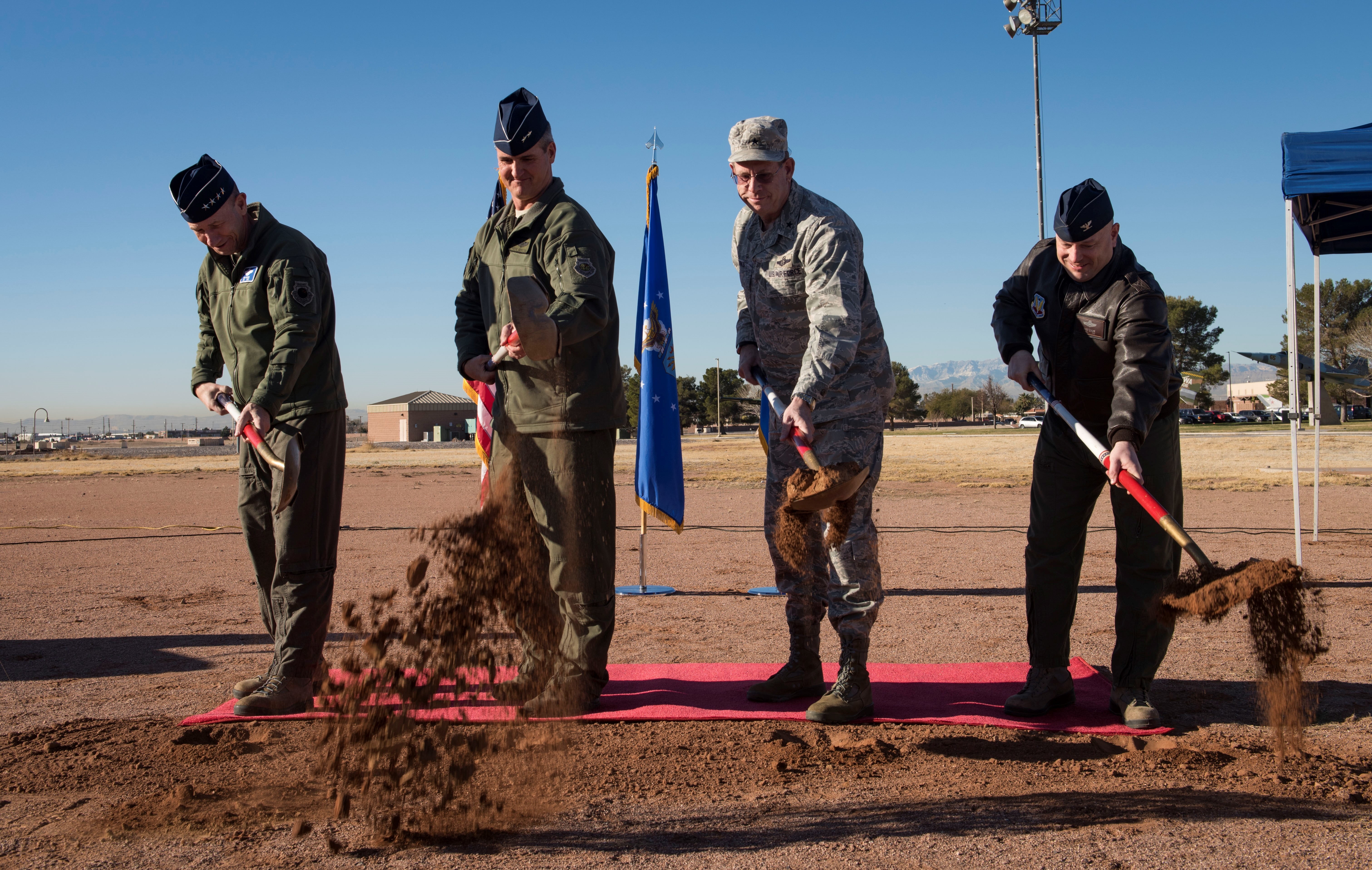The evolving con-ops for operating in the extended battlespace is the kill web.
The challenge is that connecting a force package that can operate as a distributed kill web requires new training tools in addition to shaping the force packages themselves.
Earlier this year, the USAF began the construction on a new training center at Nellis AFB to provide for a key contribution to the new training approach.
According to an article by Rebekah Mattes, 99th Air Base Wing Public Affairs and published on February 8, 2019:
Gen. Mike Holmes, Air Combat Command commander and Maj. Gen. Peter Gersten, U.S. Air Force Warfare Center commander, broke ground Feb. 8 on the Virtual Test and Training Center (VTTC), which will enable full-spectrum readiness through next-generation battlespace environments.
The live-virtual-constructive training environments will equip the next generation of lethal, world-class Airmen and warriors.
“The Virtual Test and Training Center will provide a crucial capability for today’s warfighters to experience, train and dominate today’s threats, across multiple domains through a combination of live, virtual and constructive environments,” said Gersten.
Operators from across platforms and domains will have the capability to plan, brief, execute and debrief together in one location, according to Col. Dean Caldwell, VTTC director.
“The center will have a full complement of Air Force fighter aircraft simulators, and a tactical command and control simulator. We’ll also house space and cyber missions to ensure multi-domain integration required for the high-end, near-peer fight outlined in the National Defense Strategy,” said Caldwell.
In addition, the VTTC offers a simulator capability that will augment live fly training, said Caldwell.
“It’s the first step toward a truly blended solution, in which the simulators can participate in the same scenario as aircraft flying over the Nevada Test and Training Range or in a completely separate scenario somewhere globally,” said Caldwell.
Finally, the VTTC training allows warfighters to adapt to the future fight, while strengthening security on the home front.
“Looking to the future, exercises won’t be exclusively live-fly,” said Caldwell. “Our range spaces are finite, and as we bring new capabilities online, we’re outgrowing them. What’s more is that with the combination of live, virtual and constructive training, we’re actually bolstering operational security through innovative uses of live, virtual and constructive technologies.”
The $38 million VTTC ops facility is scheduled to open in the summer of 2021.
The USAFWC is the Air Force’s focal point for development, production and evolution of integrated, multi-domain combat capabilities for major commands and combatant commanders. The mission of the USAFWC is to lead and influence advanced readiness for the high-end fight through air, space and cyberspace combat capabilities.
The challenge of training a fifth generation-enabled force was highlighted by Major General Gersten:
Newer, more capable fifth-generation aircraft platforms and systems are outgrowing even the largest U.S. Air Force training ranges – and the service believes modern simulators and virtual reality may be the answer.
Considering the capabilities of modern advanced threats, even the Nellis Air Force Base’s Nevada Test and Training Range (NTTR), the U.S. Air Force’s 12,000-square-nautical mile “crown jewel” range, is 50 percent too small for running realistic sorties, according to U.S. Air Force Warfare Center commander, Major General Peter Gersten.
While fighter aircraft used to be able to take off from Nellis and meet in the middle of NTTR to engage each other, modern fighter capabilities like beyond-line-of-sight targeting mean those aircraft can be targeted and engaged the moment they leave the runway, said Gerten during day one of the Air Force Association’s 2019 Air Warfare Symposium.
Furthermore, through cyber breaches and satellite reconnaissance, adversaries are better equipped to monitor “open air” training.
“We have to start being thoughtful about how we transition a good portion of advanced training into the synthetic space,” said Gersten, suggesting that the best option is to move more training operations into live, virtual training systems.
The featured photo shows Gen. Mike Holmes, commander of Air Combat Command, Maj. Gen. Peter Gersten, U.S. Air Force Warfare Center commander, Brig. Gen. William Burks, the Adjutant General for the state of Nevada, and Col. Christopher Zuhlke, Nevada Test and Training Range commander, break ground on the Virtual Test and Training Center (VTTC) on Nellis Air Force Base, Nevada, Jan. 8, 2019.
(U.S. Air Force photo by Airman 1st Class Bailee A. Darbasie)


